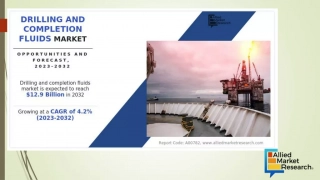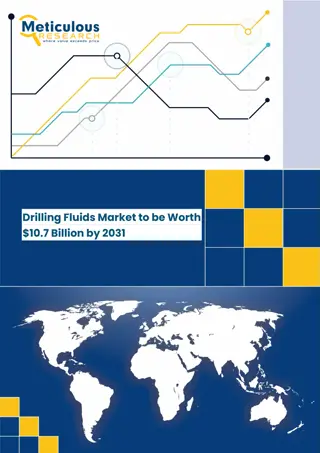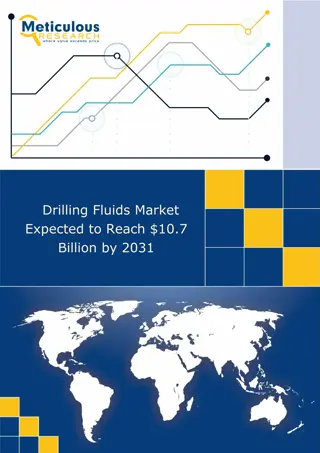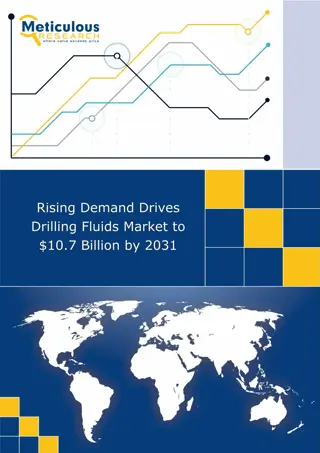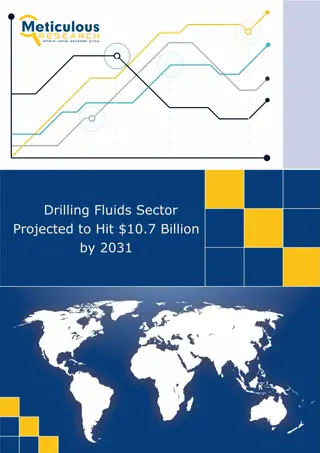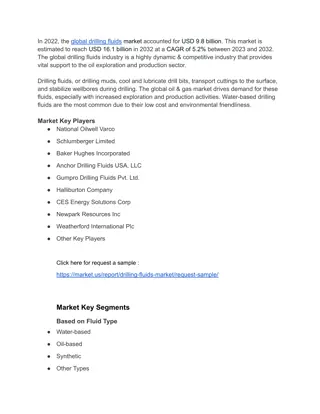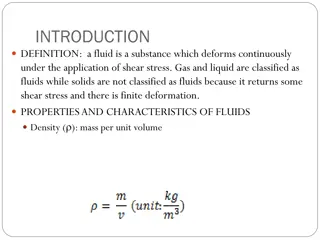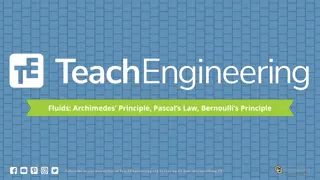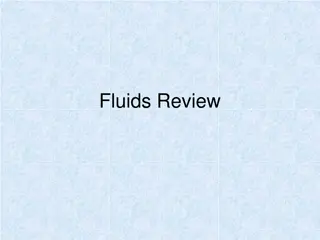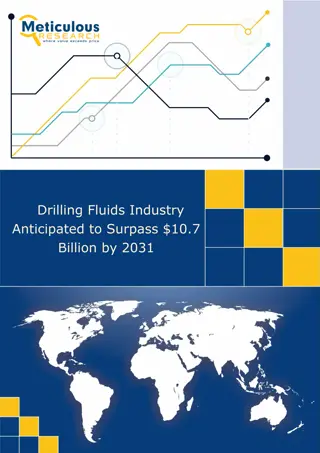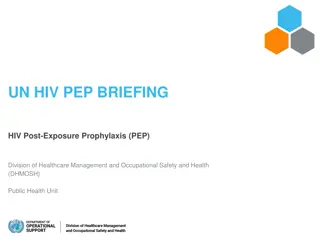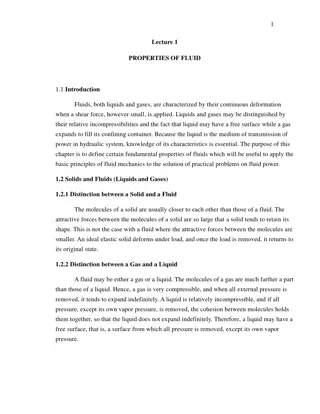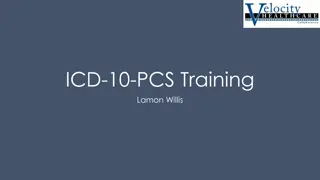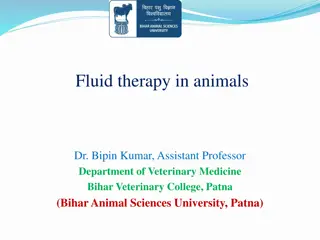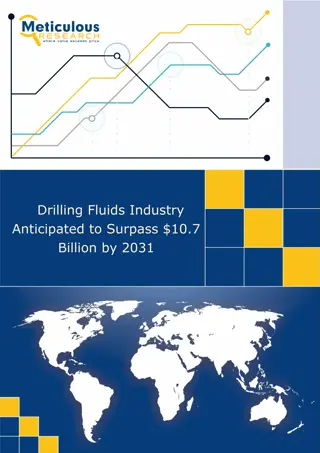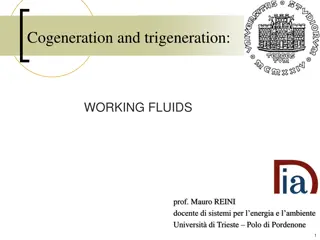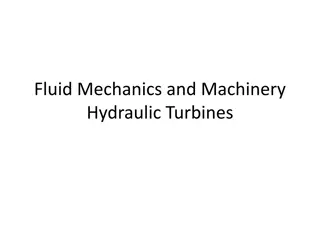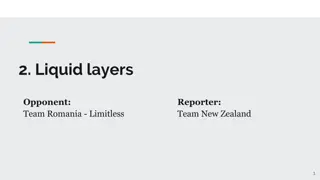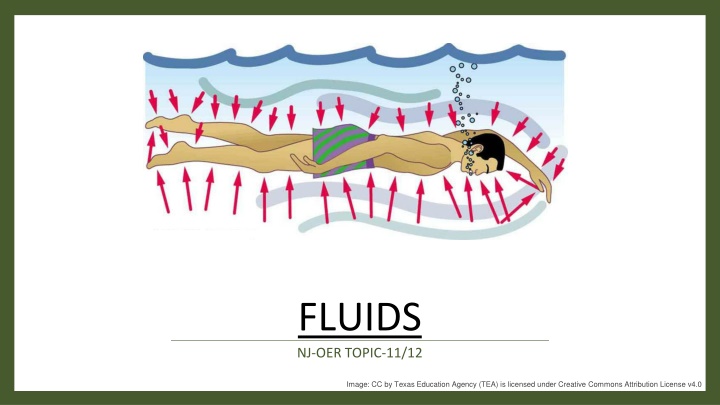
Heat Transfer and Thermal Properties in Fluids
Explore concepts related to heat transfer, equilibrium temperature calculation, thermal conductivity, and more in fluids. Learn about the methods of heat transfer, convection, radiation power calculations, and the relationship between area, temperature, power, and emissivity. This educational material also covers topics such as energy conservation, buoyant force, pressure, and fluid dynamics. Dive into the fascinating world of fluid mechanics and thermal properties with this comprehensive resource.
Uploaded on | 0 Views
Download Presentation

Please find below an Image/Link to download the presentation.
The content on the website is provided AS IS for your information and personal use only. It may not be sold, licensed, or shared on other websites without obtaining consent from the author. If you encounter any issues during the download, it is possible that the publisher has removed the file from their server.
You are allowed to download the files provided on this website for personal or commercial use, subject to the condition that they are used lawfully. All files are the property of their respective owners.
The content on the website is provided AS IS for your information and personal use only. It may not be sold, licensed, or shared on other websites without obtaining consent from the author.
E N D
Presentation Transcript
FLUIDS NJ-OER TOPIC-11/12 Image: CC by Texas Education Agency (TEA) is licensed under Creative Commons Attribution License v4.0
Original Publication Year 2022 General Physics I by Moe Tabanli is licensed under aCreative Commons Attribution-NonCommercial-ShareAlike 4.0 International License, except where otherwise noted. To learn more about the Open Textbook Collaborative, visit https://middlesexcc.libguides.com/OTCProject Under this license, any user of this textbook or the textbook contents herein must provide proper attribution as follows: If you redistribute this textbook in a digital or print format (including but not limited to PDF and HTML), then you must retain this attribution statement on your licensing page. If you redistribute part of this textbook, then you must include citation information including the link to the original document and original license on your licensing page. If you use this textbook as a bibliographic reference, please include the link to this work https://opennj.net//physics- tabanli in your citation. For questions regarding this licensing, please contact library@middlesexcc.edu Funding Statement This material was funded by the Fund for the Improvement of Postsecondary Education (FIPSE) of the U.S. Department of Education for the Open Textbooks Pilot grant awarded to Middlesex College (Edison, NJ) for the Open Textbook Collaborative. Open Textbook Collaborative The Open Textbook Collaborative. (OTC) project is a statewide project managed by Middlesex College along with assistance from Brookdale Community College, Ocean County College , Passaic County Community College, and Rowan University . The project engages a consortium of New Jersey community colleges and Rowan University to develop open educational resources (OER) in career and technical education STEM courses. The coursesalign tocareer pathways in New Jersey s growth industries including health services, technology, energy, and global manufacturing and supply chain management as identified by the New Jersey Council of Community Colleges.
Define heat as transfer of energy. Calculate equilibrium temperature after heat transfer between two objects without phase change State energy conservation after heat transfer between many objects with or without phase change Calculate thermal conductivity. Calculate total heat transfer between a cold reservoir and hot reservoir Discuss the method of heat transfer by convection. Calculate the radiation power of different materials. Establish the relationship between the area, temperature, power, emissivity for objects that are going through a process Learning Outcomes
h= Depth of the liquid column , measured downward = Density V = Volume I = Rate of flow FB = Buoyant force Wdisplaced =Weight of the displaced fluid v = Velocity A = Area P = Pressure Po= Zero level pressure Vs = volume of submerged part of the object Concepts Po= 1 atm=1.01 105Pa for open containers under normal conditions Vo= volume of an object y= y coordinate of a point measured upward Po=0 for vacuum
SI UNITS Density is in kg/m3 Pressure is in Pascal Pa Height and y is in meters m Rate of flow is in m3/s Units NON-SI UNIT Pressure in atm Pressure in Hgmm Volume 1L= 10 3m3
=m/V Specific Gravity=Ratio of density of substance to water density ?=?/? Pgauge = Pabsolute Patmospheric Pascal s principle Pa=Pb at the same level of the liquid Formulas and Constants Archimedes Principle FB= Wdisplaced = (liquid) V(object in the liquid) g when floating o/ l=V(in)/Vo o/ l=h(in)/ho Apparent Weight = mg FB Apparent weight can be tension or normal force P=Po+ gh For static fluids P=Po + 1 g h1 + 2 g h2 + .. multiple layers P1+ v12+ gy1= P2+ v22+ gy1 A1 v1 = A2 v2 continuity Bernoulli s equation
PASCAL PRINCIPLE Depth Variance of Pressure in Static Fluids Hydraulic Press Barometer Manometers Images: CC by Texas Education Agency (TEA) is licensed under Creative Commons Attribution License v4.0
CLASSWORK FOR PASCAL PRINCIPLE Q1) A 10,000 N car is on a circular hydraulic press plate with radius 2 meters. A smaller plater with radius 0.4 meters is used for lifting the car. What is the force required to hold the car in equilibrium? Q2)A U-tube manometer is filled with water. Oil with density 950 kg/m3 is poured on one side to the height of 0.10 m. What is the level difference between the two side of u-tube? (Pa=Pb) Q3) 3 layers of liquid is poured on top of each other. What should be the height of water at the top so that the pressure at the bottom of the container is 120 kPa. Q4) What is the level of the liquid in a Barometer under normal Atmospheric conditions if A) Liquid water is exposed to air and the other side is a vacuum B) Liquid mercury is exposed to air and the other side is a vacuum C) Liquid mercury is exposed to air and the other side is closed, containing gas with pressure 90,000 Pascal Images: CC by M.Tabanli and J. Meenu
ACTIVITY FOR DEPTH VARIANCE OF PRESSURE Open the under pressure app at PhET https://phet.colorado.edu/en/simulations/under-pressure Choose the first option. Click on ruler and grid. Start with water as your liquid. Set gravity to 9.8 m/s2 Fill the tank by opening the faucet Drag the pressure gauge, record its value at various depths Calculate the pressure at various depths and compare Fill the table below. Repeat the activity using different liquids and different gravity. DATA: Density: Gravity: Po: Depth (meters) Pressure measured (units) Pressure Calculated (units) 1 2 3 Simulation by PhET Interactive Simulations, University of Colorado Boulder, licensed under CC-BY-4.0 (https://phet.colorado.edu).
ACTIVITY FOR PASCAL PRINCIPLE https://phet.colorado.edu/en/simulations/under-pressure Open the under pressure app at PhET Choose the second option. Click on ruler and grid. Fill the tank by opening the faucet Drag the pressure gauge, record its value at various depths For each depth record pressure on the left and on the right Fill the table below. Repeat the activity using different liquids and different gravity. DATA: Density: Gravity: Po: Depth (meters) Pressure Left (units) Pressure Right (units) 1 2 3 Simulation by PhET Interactive Simulations, University of Colorado Boulder, licensed under CC-BY-4.0 (https://phet.colorado.edu).
ADVANCED ACTIVITY FOR PASCAL PRINCIPLE 1000 kg mass is placed on the left side of a u-shaped tank as shown in the graph. As a result, left side is pushed down by 0.96 meters relative to the right side. Using the Pascal principle and depth variance of pressure calculate the surface area of the 1000 kg mass. https://phet.colorado.edu/en/simulations/under-pressure Choose the third option. Place all the masses on the left side Turn off the atmospheric pressure. Find the pressure of right from the depth Find the force on the left using W=mg Find the expression for the Pressure on the left using P=F/A Set P(left)=P(right) solve for the unknown area. Change liquid density, gravity and mass and repeat the activity. Level difference between the left and the right side can be measured using the ruler tool or calculated using the pressure on the right. Open the under pressure app at PhET Simulation by PhET Interactive Simulations, University of Colorado Boulder, licensed under CC-BY-4.0 (https://phet.colorado.edu).
CLASSWORK FOR ARCHIMEDES PRINCIPLE Floating Objects Sinking Objects Q1) 0.12 kg cork with 0.05 m3 Volume is floating inside water. What is the volume inside the water? Q4) 7 kg Iron is placed inside water. What is the normal force acted on it? (Density of Iron is 7900 kg/m3) A) Find its weight B) Find its volume C) Find FB and Apparent Weight Q2) A piece of wood is in sea water. What is the density of the log if 60% of the log is inside the water? (salt water density is 1030 kg/m3) Q5) Aluminum with 0.2 m3volume is placed inside the water on a triple beam scale. What is the tension on the wire that holds the aluminum. (Density of Aluminum is 2700 kg/m3) A) Find its mass and its weight B) Find FB and Apparent weight Floating o/ l=V(in)/Vo o/ l=h(in)/ho Q3) Watermelon is floating inside a liquid with 100% of its volume is inside. What is the condition for this float? Sinking Apparent Weight = mg FB FB= Wdisplaced FB= (liquid) V(object) g Image: Khursheed afroz, CC BY-SA 4.0, via Wikimedia Commons
KEY STRATEGIES FOR BERNOUILLI'S EQUATION P1+ v12+ gy1 = P2+ v22+ gy1 Bernoulli s equation A1 v1 = A2 v2 continuity equation SPECIAL CASES If the pressure difference is asked, solve for either P2-P1 of P1-P2 If pipe is vertical y1=y2, cross them out If both sides are open to air P1=P2, cross them out If the pipe size doesn't change, v1=v2 cross them out Find two reference points with either different speeds, different heights or pressure Label them with the index 1 and index 2 From the word problem and/or graph identify P1, v1, y1, P2,v2,y2 Identify your unknown Write the Bernouilli's equation and solve for the unknown using the numbers given in the problem Images: CC by Texas Education Agency (TEA) is licensed under Creative Commons Attribution License v4.0
CLASSWORK FOR BERNOUILLI'S EQUATION Q1) A water tank is 5 meters tall. At the base of the tank there is hole. What is the velocity of the water coming from the hole? Consider that the water speed at the top is negligible. Q2) Water is flowing from a wide vertical pipe with v=3 m/s. At one point the pipe narrows due to build up and as a result water s velocity becomes v= 7 m/s. What is the pressure difference between the narrow point and wider point? Q3) Water is flowing from a Z-shaped tube with constant cross-sectional area. The height difference between the top and the bottom is 0.50 meters and water pressure at the top is 6000 Pa. What is the water pressure at the bottom? Q4) Water is flowing from a diagonal tube. At the ground level of the tube the speed of 4 m/s and the pressure is 70000Pa. What is the pressure in the tube 5 meters above the ground, if the water flows with speed of 6 m/s due to narrowing? Find the ratio of the areas at the bottom to the top
REFERENCES Slide 1, 6, 12 Open Stax College Physics online textbook Slide 7: Gen-Ed-Phys-I Workbook by M.Tabanli and J. Meenu and Open Stax College Physics online textbook Slides 8-9-10 Screenshot from PhET Interactive Simulations University of Colorado Boulder Slide 11: Khursheed afroz, CC BY-SA 4.0, via Wikimedia Commons

